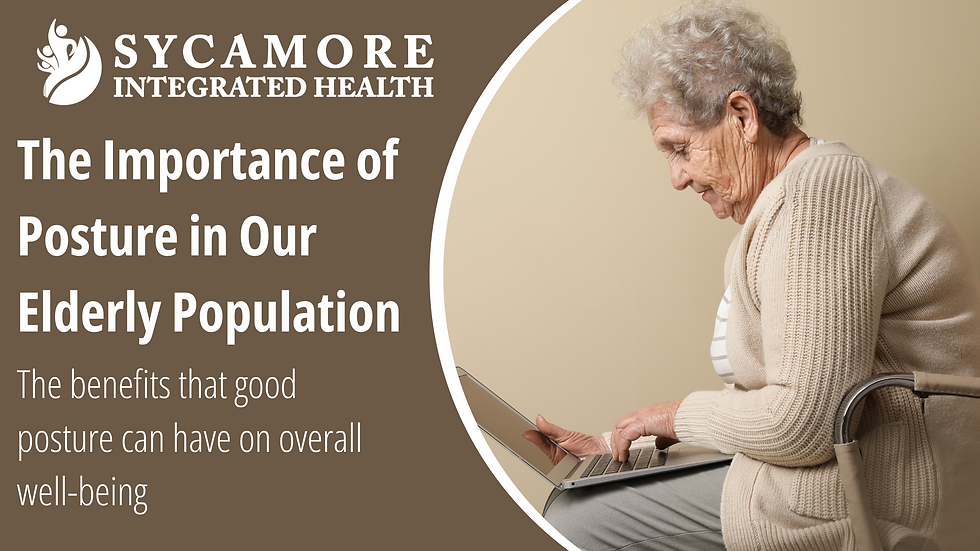Avoid Back Pain While Shoveling Snow This Winter
- Sycamore Integrated Health

- Dec 28, 2021
- 3 min read

As winter fast approaches, the onset of snow is only a short time away. This brings about the unpleasant but necessary task of shoveling.
If you don’t have a snow blower, then shoveling your driveway and sidewalks – especially during a heavy snowfall – can be a strenuous chore. While at first it may seem like a good physical activity (and it is), prolonged shoveling without the proper tools or form can cause significant pain in your back, hips and knees.
Fortunately, there are some good ways to reduce or eliminate this strain on our bodies while we remove all that pesky snow.
Use the right shovel
The right tool makes all the difference for any job, but it can literally be a back saver when it comes to shoveling.
You need a shovel that is long enough to keep you from having to bend over too much and strain your lower back. Some shovels have a primary handle and also one further down toward the blade which helps you lift the shovel with less force and strain on your body. Gripping the shovel close to the blade or scooping end of the shovel will help minimize the effort required to lift and move the snow. Another great idea is to not fill the shovel up as much as possible and take more trips rather than moving heavy amounts the whole time.

Warm up, stretch out, hydrate, and take intermittent breaks
Just like you’d do before exercising or playing sports, spending a few minutes loosening up with a series of stretches can really help. Focus on stretches for your neck and lower back, shoulders, quads and hamstrings. This will get the blood flowing to those areas and prepare them for rigorous activity.
Also, your muscles need proper hydration to function better. You may not feel too thirsty if it’s really cold outside but drinking water prior to shoveling helps regulate your muscle and body heat, allowing them to move more freely and keep good blood flow circulating. This will lessen the chance of over-straining.
If there has been significant snowfall, there may be a lot of snow needing to be removed. Try to take a break every now and then so you don't overexert yourself. Many injuries happen while we are fatigued as we start to use poor form and muscles get overworked. Be sure to listen to your body when you are starting to get tired.
Dress appropriately and use proper form
This may seem obvious, but it’s important to stay warm when you’re shoveling. Use tighter clothing as your base layer, and then add on thicker, water-repelling layers on top of that. This will keep your body warm, and both blood and oxygen flowing properly throughout your body.
Like any exercise – weightlifting for example – proper form is crucial.
Bend at the knees and hips and lift with your legs to take stress off your lower back. Bracing your core/abdomen while sticking your belly out before you begin lifting the snow will also help take the workload off of your back. When you’re ready to toss the snow off to the side, remember to turn your feet to where you’re dumping the snow. Repetitive twisting and tossing weight puts your joints in compromising positions that can lead to injuries. As noted above shoveling lighter amounts might take a little long but will be much easier on your body.

All of these steps have a cumulative effect to help keep your muscles loose, which will reduce inflammation and back pain when heading out to shovel the snow this winter. If you do end up shoveling and injure yourself, remember to put some ice on the area of pain, try to keep moving through as much pain free range of motion as possible, and get in to see the health professionals at Sycamore Integrated Health to get you back on track!





Comments